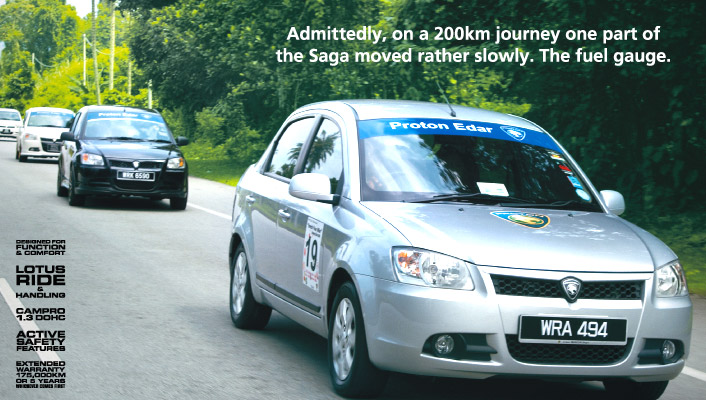IN JULY 1837, Charles Darwin had a flash of inspiration. In his study at his house in London, he turned to a new page in his red leather notebook and wrote, "I think". Then he drew a spindly sketch of a tree.
As far as we know, this was the first time Darwin toyed with the concept of a "tree of life" to explain the evolutionary relationships between different species. It was to prove a fruitful idea: by the time he published On The Origin of Species 22 years later, Darwin's spindly tree had grown into a mighty oak. The book contains numerous references to the tree and its only diagram is of a branching structure showing how one species can evolve into many.
The tree-of-life concept was absolutely central to Darwin's thinking, equal in importance to natural selection, according to biologist W. Ford Doolittle of Dalhousie University in Halifax, Nova Scotia, Canada. Without it the theory of evolution would never have happened. The tree also helped carry the day for evolution. Darwin argued successfully that the tree of life was a fact of nature, plain for all to see though in need of explanation. The explanation he came up with was evolution by natural selection.
Ever since Darwin the tree has been the unifying principle for understanding the history of life on Earth. At its base is LUCA, the Last Universal Common Ancestor of all living things, and out of LUCA grows a trunk, which splits again and again to create a vast, bifurcating tree. Each branch represents a single species; branching points are where one species becomes two. Most branches eventually come to a dead end as species go extinct, but some reach right to the top - these are living species. The tree is thus a record of how every species that ever lived is related to all others right back to the origin of life.
For much of the past 150 years, biology has largely concerned itself with filling in the details of the tree. "For a long time the holy grail was to build a tree of life," says Eric Bapteste, an evolutionary biologist at the Pierre and Marie Curie University in Paris, France. A few years ago it looked as though the grail was within reach. But today the project lies in tatters, torn to pieces by an onslaught of negative evidence. Many biologists now argue that the tree concept is obsolete and needs to be discarded. "We have no evidence at all that the tree of life is a reality," says Bapteste. That bombshell has even persuaded some that our fundamental view of biology needs to change.
So what happened? In a nutshell, DNA. The discovery of the structure of DNA in 1953 opened up new vistas for evolutionary biology. Here, at last, was the very stuff of inheritance into which was surely written the history of life, if only we knew how to decode it. Thus was born the field of molecular evolution, and as techniques became available to read DNA sequences and those of other biomolecules such as RNA and proteins, its pioneers came to believe that it would provide proof positive of Darwin's tree of life. The basic idea was simple: the more closely related two species are (or the more recently their branches on the tree split), the more alike their DNA, RNA and protein sequences ought to be.
It started well. The first molecules to be sequenced were RNAs found in ribosomes, the cell's protein-making machines. In the 1970s, by comparing RNA sequences from various plants, animals and microorganisms, molecular biologists began to sketch the outlines of a tree. This led to, among other successes, the unexpected discovery of a previously unknown major branch of the tree of life, the unicellular archaea, which were previously thought to be bacteria.
By the mid-1980s there was great optimism that molecular techniques would finally reveal the universal tree of life in all its glory. Ironically, the opposite happened.
The problems began in the early 1990s when it became possible to sequence actual bacterial and archaeal genes rather than just RNA. Everybody expected these DNA sequences to confirm the RNA tree, and sometimes they did but, crucially, sometimes they did not. RNA, for example, might suggest that species A was more closely related to species B than species C, but a tree made from DNA would suggest the reverse.
Which was correct? Paradoxically, both - but only if the main premise underpinning Darwin's tree was incorrect. Darwin assumed that descent was exclusively "vertical", with organisms passing traits down to their offspring. But what if species also routinely swapped genetic material with other species, or hybridised with them? Then that neat branching pattern would quickly degenerate into an impenetrable thicket of interrelatedness, with species being closely related in some respects but not others.
We now know that this is exactly what happens. As more and more genes were sequenced, it became clear that the patterns of relatedness could only be explained if bacteria and archaea were routinely swapping genetic material with other species - often across huge taxonomic distances - in a process called horizontal gene transfer (HGT).
At first HGT was assumed to be a minor player, transferring only "optional extra" functions such as antibiotic resistance. Core biological functions such as DNA replication and protein synthesis were still thought to be passed on vertically. For a while, this allowed evolutionary biologists to accept HGT without jeopardising their precious tree of life; HGT was merely noise blurring its edges. We now know that view is wrong. "There's promiscuous exchange of genetic information across diverse groups," says Michael Rose, an evolutionary biologist at the University of California, Irvine.
From tree to web
As it became clear that HGT was a major factor, biologists started to realise the implications for the tree concept. As early as 1993, some were proposing that for bacteria and archaea the tree of life was more like a web. In 1999, Doolittle made the provocative claim that "the history of life cannot properly be represented as a tree" (Science, vol 284, p 2124). "The tree of life is not something that exists in nature, it's a way that humans classify nature," he says.
Thus began the final battle over the tree. Many researchers stuck resolutely to their guns, creating ever more sophisticated computer programs to cut through the noise and recover the One True Tree. Others argued just as forcefully that the quest was quixotic and should be abandoned.
The battle came to a head in 2006. In an ambitious study, a team led by Peer Bork of the European Molecular Biology Laboratory in Heidelberg, Germany, examined 191 sequenced genomes from all three domains of life - bacteria, archaea and eukaryotes (complex organisms with their genetic material packaged in a nucleus) - and identified 31 genes that all the species possessed and which showed no signs of ever having been horizontally transferred. They then generated a tree by comparing the sequences of these "core" genes in everything from E. coli to elephants. The result was the closest thing yet to the perfect tree, Bork claimed (Science, vol 311, p 1283).
Other researchers begged to differ. Among them were Tal Dagan and William Martin at the Heinrich Heine University in Düsseldorf, Germany, who pointed out that in numerical terms a core of 31 genes is almost insignificant, representing just 1 per cent of a typical bacterial genome and more like 0.1 per cent of an animal's. That hardly constitutes a mighty oak or even a feeble sapling - more like a tiny twig completely buried by a giant web. Dagan dubbed Bork's result "the tree of 1 per cent" and argued that the study inadvertently provided some of the best evidence yet that the tree-of-life concept was redundant (Genome Biology, vol 7, p 118).
The debate remains polarised today. Bork's group continue to work on the tree of life and he continues to defend the concept. "Our point of view is that yes, there has been lots of HGT, but the majority of genes contain this tree signal," Bork says. The real problem is that our techniques are not yet good enough to tease that signal out, he says.
Meanwhile, those who would chop down the tree of life continue to make progress. The true extent of HGT in bacteria and archaea (collectively known as prokaryotes) has now been firmly established. Last year, Dagan and colleagues examined more than half a million genes from 181 prokaryotes and found that 80 per cent of them showed signs of horizontal transfer (Proceedings of the National Academy of Sciences, vol 105, p 10039).
Surprisingly, HGT also turns out to be the rule rather than the exception in the third great domain of life, the eukaryotes. For a start, it is increasingly accepted that the eukaryotes originated by the fusion of two prokaryotes, one bacterial and the other archaeal, forming this part of the tree into a ring rather than a branch (Nature, vol 41, p 152).
The neat picture of a branching tree is further blurred by a process called endosymbiosis. Early on in their evolution, eukaryotes are thought to have engulfed two free-living prokaryotes. One of these gave rise to the cellular power generators called mitochondria while the other was the precursor of the chloroplasts, in which photosynthesis takes place. These "endosymbionts" later transferred large chunks of their genomes into those of their eukaryote hosts, creating hybrid genomes. As if that weren't complicated enough, some early eukaryotic lineages apparently swallowed one another and amalgamated their genomes, creating yet another layer of horizontal transfer (Trends in Ecology and Evolution, vol, 23, p 268).
This genetic free-for-all continues to this day. The vast majority of eukaryote species are unicellular - amoebas, algae and the rest of what used to be known as "protists" (Journal of Systematics and Evolution, vol 46, p263). These microscopic beasties have lifestyles that resemble prokaryotes and, according to Jan Andersson of the University of Uppsala in Sweden, their rates of HGT are often comparable to those in bacteria. The more we learn about microbes, the clearer it becomes that the history of life cannot be adequately represented by a tree.
Hang on, you may be thinking. Microbes might be swapping genes left, right and centre, what does that matter? Surely the stuff we care about - animals and plants - can still be accurately represented by a tree, so what's the problem?
Well, for a start, biology is the science of life, and to a first approximation life is unicellular. Microbes have been living on Earth for at least 3.8 billion years; multicellular organisms didn't appear until about 630 million years ago. Even today bacteria, archaea and unicellular eukaryotes make up at least 90 per cent of all known species, and by sheer weight of numbers almost all of the living things on Earth are microbes. It would be perverse to claim that the evolution of life on Earth resembles a tree just because multicellular life evolved that way. "If there is a tree of life, it's a small anomalous structure growing out of the web of life," says John Dupré, a philosopher of biology at the University of Exeter, UK.
More fundamentally, recent research suggests that the evolution of animals and plants isn't exactly tree-like either. "There are problems even in that little corner," says Dupré. Having uprooted the tree of unicellular life, biologists are now taking their axes to the remaining branches.
For example, hybridisation clearly plays an important role in the evolution of plants. According to Loren Rieseberg, a botanist at the University of British Columbia in Vancouver, Canada, around 14 per cent of living plant species are the product of the fusion of two separate lineages.

















































